
Unlinked mentions often occur in blog posts, news articles, forums, and social media.
And while it's still great to be talked about online, the real gold is turning these unlinked mentions into valuable backlinks that can actually boost your search engine rankings.
In this blog post, you will learn everything there is to know about unlinked mentions. We'll share the different types of unlinked mentions, how to find them, and finally give you a few tips on how to turn them into real backlinks that carry SEO value.
What are Unlinked Mentions in SEO?
Unlinked mentions in SEO refer to instances where your brand, product, or content is mentioned on another website without a direct hyperlink back to your site.
A practical example of this is a blogger writing a review about your product but not including a clickable link to your website. While your brand is acknowledged, the absence of a backlink means you miss out on the SEO benefits that come with it.
Here’s another real example of this, in this blog post on Grow a Small Business, the author mentions SEOptimer in his content.
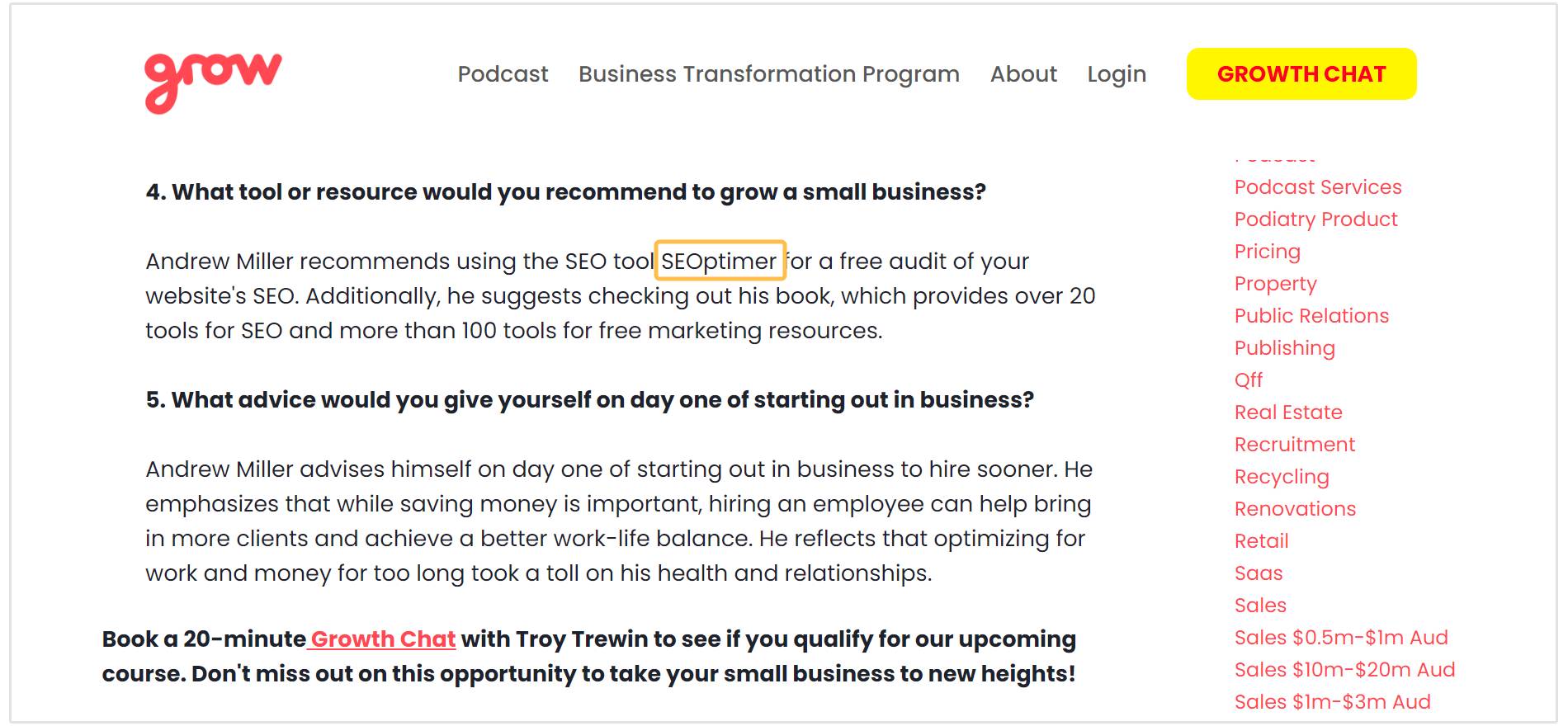
However, the mention doesn’t contain a backlink referring readers to our website.
Types of Unlinked Mentions
Did you know that there are different types of unlinked mentions in SEO?
Here are some common types of unlinked mentions:
- Brand Mentions: Direct references to your company's name or brand without a hyperlink.
- Product Mentions: Mentions of your specific products or services in articles, reviews, or discussions.
- Content Mentions: Citations of your content, such as blog posts, whitepapers, or infographics, without a backlink.
- Use of Images: Use of your designed images or graphics on other websites without crediting you with a link.
- Research Mentions: References to first-party research or data that you have published.
- Event Mentions: Mentions of events you host or participate in, like webinars, conferences, or workshops.
- Social Media Mentions: Your brand or content being mentioned in social media posts without linking back to your website. (Although these carry no direct SEO benefit even when linked)
Great, now that you know the different types of unlinked mentions that exist, let's take a closer look at some methods for finding unlinked mentions.
The Importance of Unlinked Mentions
While unlinked mentions don't immediately provide the direct benefits of a backlink, they are far from insignificant. Here’s why unlinked mentions are important:
1. Brand Visibility
Unlinked mentions increase your brand's exposure across various platforms and websites.
They create awareness and recognition, making your brand more familiar to a broader audience.
2. Trust and Authority
Being mentioned on reputable websites or in industry discussions enhances your brand's credibility.
These mentions act as endorsements, signaling to your audience that your brand is noteworthy.
3. Potential Backlinks
Each unlinked mention represents an opportunity to gain a valuable backlink.
4. Organic Reach
Unlinked mentions often appear in a natural, organic manner such as external blog posts.
This type of exposure is generally more trusted by readers compared to paid advertisements.
How to Find Unlinked Mentions
1. Use an Online Monitoring Tool
One of the simplest and most efficient ways to find unlinked mentions is by using an online monitoring tool. These tools are designed to track any mention of your brand, products, or content across the web, enabling you to identify unlinked mentions quickly.
Why Use a Monitoring Tool?
- Ease of Use: Online monitoring tools automate the process of finding mentions, saving you time and effort.
- Comprehensive Tracking: They scan various platforms, including blogs, news sites, forums, and social media, ensuring you don't miss any mentions.
- Real-Time Alerts: Receive instant notifications whenever your brand is mentioned, allowing you to take prompt action.
For this example, I'm going to show you how to find unlinked mentions using a tool called BuzzSumo.
- Log into BuzzSumo or create an account if you don’t have one already.
- Click on the “Monitoring” tab on the top of the dashboard. Here you’ll be able to view existing alerts and create new ones.
- Click on “Create Alert” and choose the “Brands” option for tracking brand mentions, you can also choose the “Keyword” option if you want to track any product mentions.
- Choose the frequency and how you want to be alerted.
- After customizing the settings, just click on “Create Alert”.
As you can see in the below screenshot, I’ve created alerts for both “SEOptimer” and “SEO audit” using the above process.
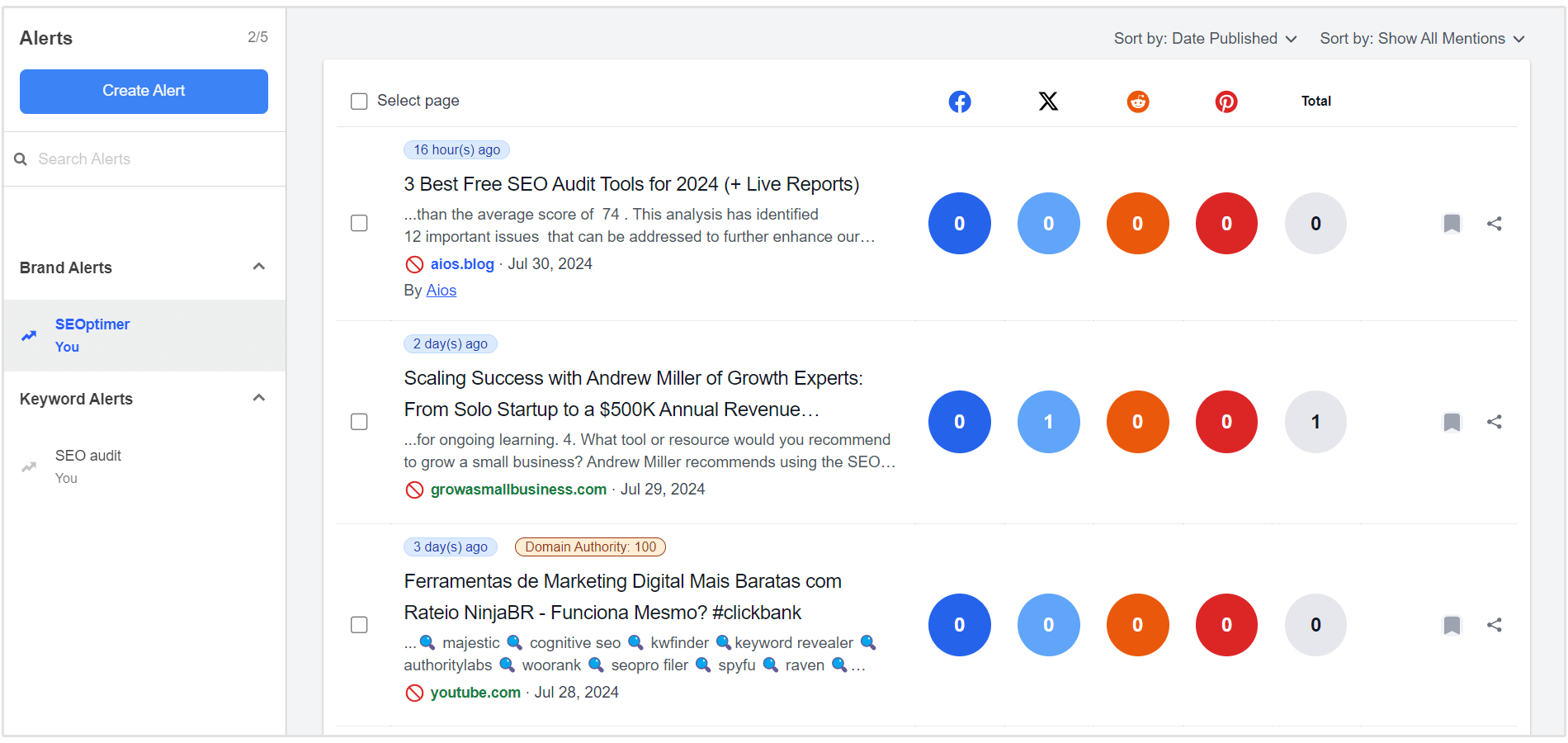
Unfortunately BuzzSumo doesn’t say whether the mention is linked or unlinked so you’ll have to go through every alert to find the ones that don’t have a backlink to your site.
There are alternative to BuzzSumo that you can try as well:
- Brand24
- Mention
- Meltwater
2. Google Reverse Image Search
If you're designing your own images for your content, there's a good chance your images are being used out there without your knowledge.
One effective method for finding these images is using Google Reverse Image Search.
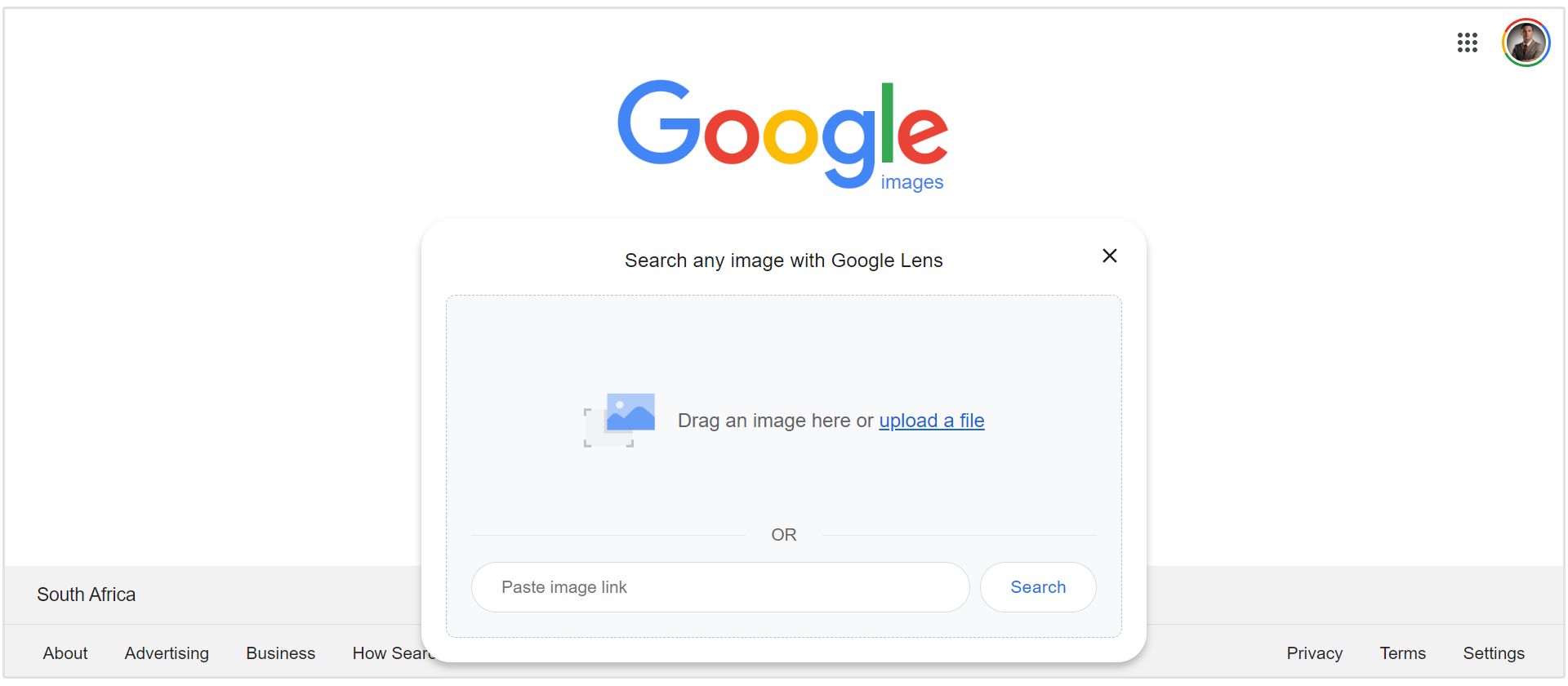
Here's how to do it:
- Go to Google Images.
- Click on the camera icon in the search bar. You have two options here:
- Paste Image URL: If your image is hosted online, paste its URL.
- Upload an Image: You can also upload an image directly from your computer.
- Google will display a list of websites where your image appears. Examine these results to find sites using your images without providing a backlink.
- Create a detailed record of these sites using a Google Sheets or Excel document. Include the website name, URL where the image is used, and the contact information.
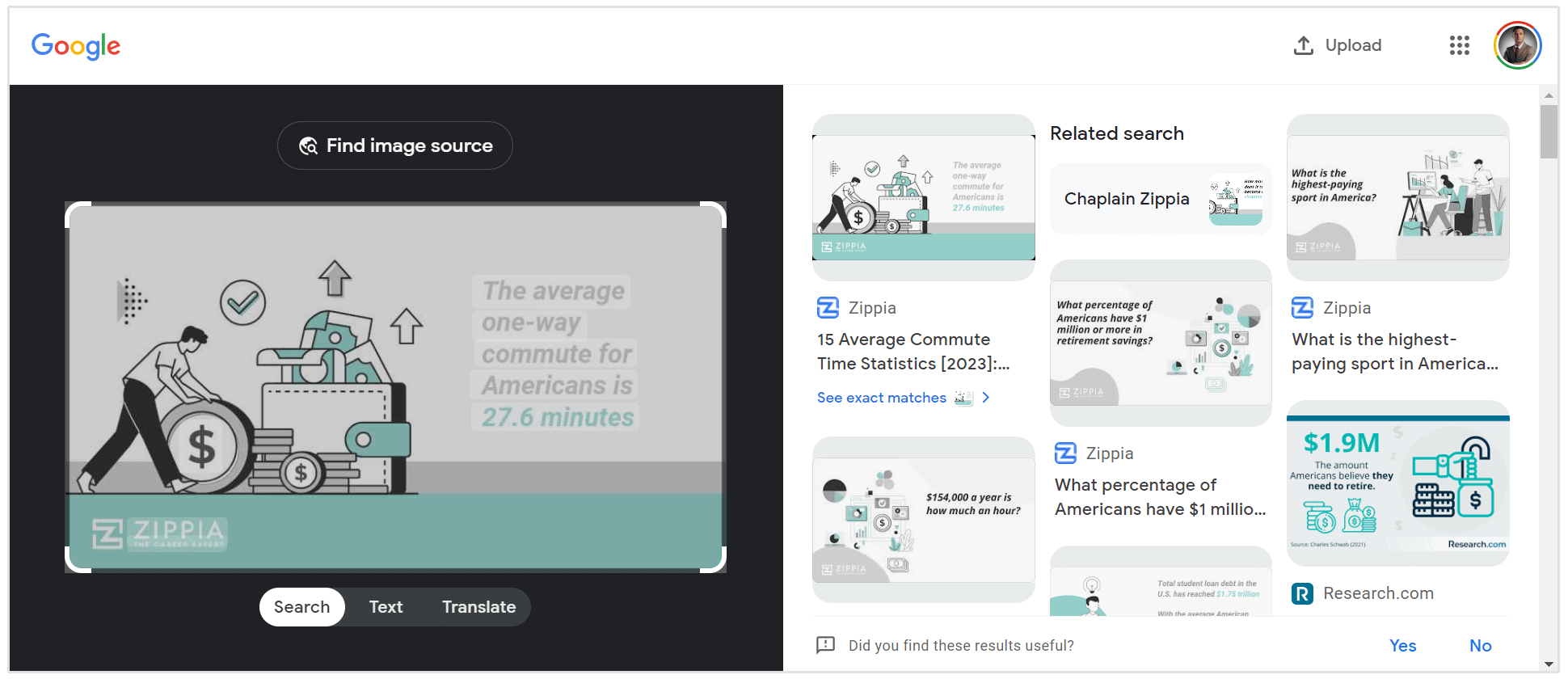
3. Set Up Google Alerts
Another simple and effective way to track unlinked mentions of your brand online is by setting up Google Alerts. This tool is completely free and helps you stay updated whenever your brand is mentioned on the web.
Here's how to set up Google Alerts for unlinked mentions:
- Go to Google Alerts.
- In the search bar, type the keywords related to your brand. In the case of SEOptimer, I'd add "SEOptimer" and "SEO audit tool" since these terms are highly relevant to our business.
- Click on the "Show options" dropdown to customize your alert settings. You can choose frequency, sources, language, region, and the quality of the alerts.
- Click "Create Alert" to finalize the setup.
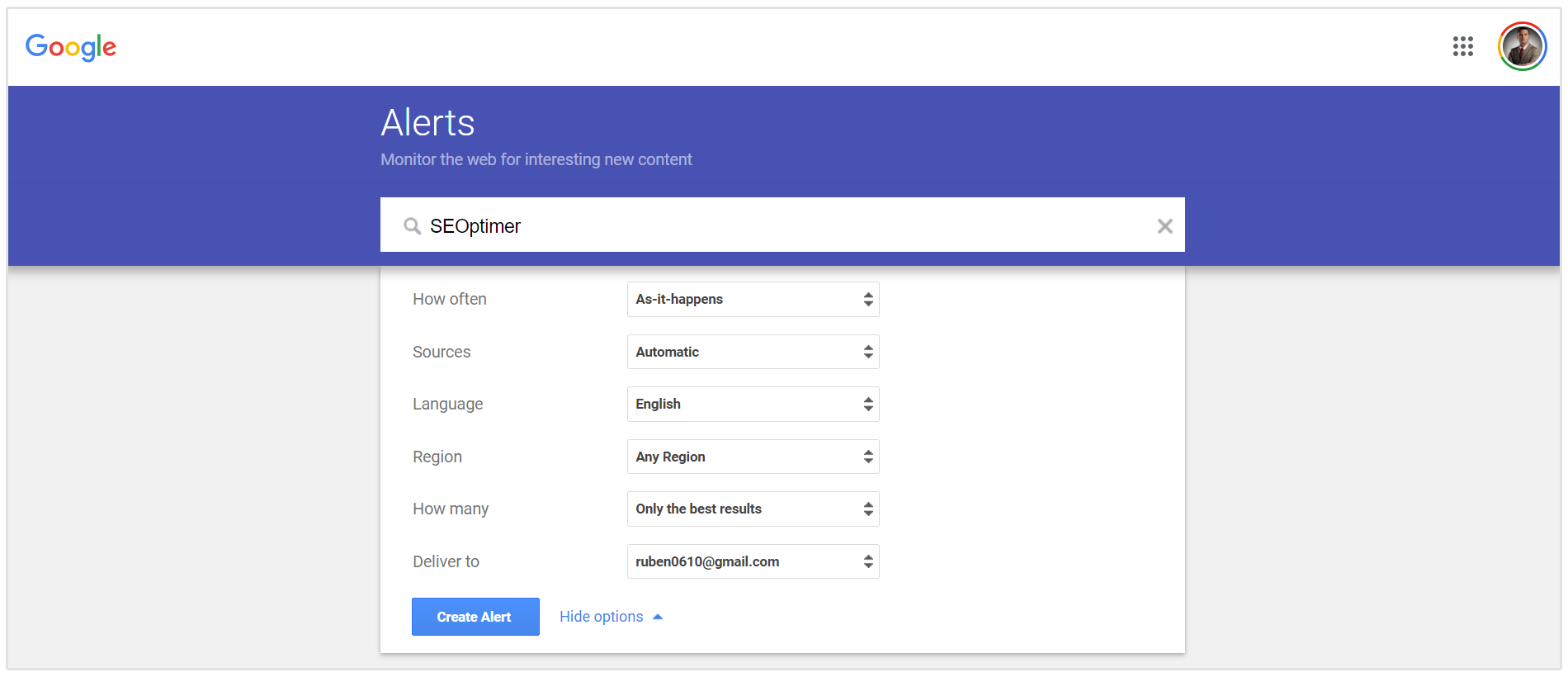
Once created, Google will send you an email each week or day, depending on the frequency you chose, showing each mention of your brand.
Note: These alerts won't just consist of unlinked mentions. Google will notify you each time your brand or chosen keyword is mentioned online. These mentions might just already be linked.
How to Claim Unlinked Mentions and Turn Them Into Backlinks
Now that you've got a few ideas on how to find these unlinked mentions, the next step is to actually claim them so that you turn them into real backlinks that have a real SEO benefit.
Hopefully you've created either a Google Sheets or Excel document that can serve as your own tracking sheet for unlinked mentions.
If not, then create that first before doing anything further. I'd suggest adding the following information to the document:
- Name of the website mentioning your brand or product.
- URL of the unlinked mention
- Type of unlinked mention
- Contact information for the website owner or editing team
- Target page where you'd like the mention to link to, this should ideally be topically relevant to the anchor text and surrounding text
So, how do you actually convert unlinked mentions to backlinks?
The key to success lies in effective email outreach.
Here are a few tips to ensure your outreach efforts are successful:
1. Personalize Your Emails
Address the recipient by name and reference their website or specific content where your brand is mentioned.
Personalization shows that you've taken the time to understand their platform, increasing the likelihood of a positive response.
Personalization is the key to successful outreach. No one wants to receive a generic, copy-paste email that’s clearly been sent to a hundred other people.
- Julia McCoy, President at Content at Scale
2. Be Clear and Concise
Keep your email straightforward and to the point. Clearly explain why you're reaching out and what action you would like the recipient to take.
It’s best to avoid lengthy explanations—brevity helps maintain the reader's attention.
3. Highlight the Value
Explain how adding a link to your site will benefit their audience. For instance, mention the additional value or resources your site provides related to their content.
You should emphasize mutual benefits rather than just focusing on your own gain.
4. Provide the Exact URL
Make it as easy as possible for the recipient to add your backlink by providing the exact URL you want them to link to.
Include anchor text suggestions if applicable, ensuring they align with the context of their content.
5. Build Relationships
Approach outreach as the beginning of a potential long-term relationship. Offer to share their content on your social media or collaborate on future projects.
Building rapport can increase the chances of getting the backlink and open doors for more opportunities down the line.
6. Follow Up Professionally
If you don't receive a response within a week or two, send a polite follow-up email, but don’t spam the inbox of the recipient.
If they haven’t responded after the third or fourth email, then you should rather just stop contacting them.
According to research done by Authority Hacker, the ideal number of follow-ups to send is 3 so I’d suggest sticking to that number.
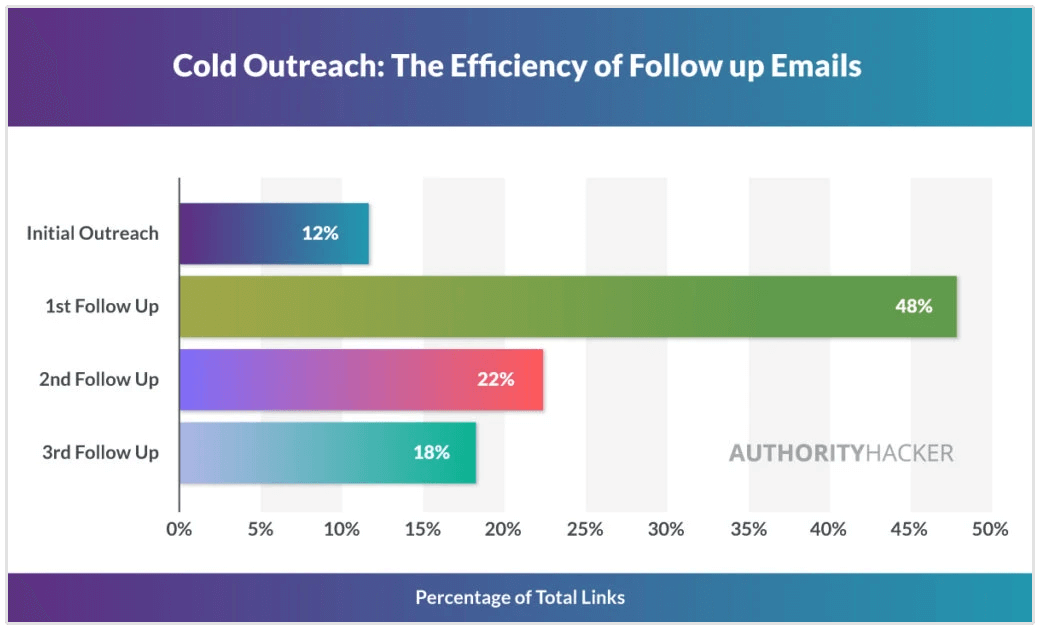
Outreach Template for Unlinked Mentions
Here’s a generic outreach email template that you can use for contacting websites.
However, you should definitely personalize the email template so that it aligns more closely with your prospect.
Hi [Prospect Name],
I hope this email finds you well. I recently came across your article, "[Article Title]," on [Website Name] and noticed that you mentioned [Your Brand/Product].
Thank you for including us! I believe adding a link to our website could provide your readers with further valuable information. Here is the URL I suggest: [Your URL].
We’d love to share your excellent content with our audience as well. Please let me know if this works for you or if you have any questions.
Looking forward to hearing from you.
Best regards,
A Word of Caution about Unlinked Mentions
While turning unlinked mentions into backlinks can significantly improve your SEO rankings, it’s crucial to be selective about which mentions you choose to convert. Not all backlinks are beneficial, and some may even harm your website’s reputation.
Here are key factors to watch out for:
1. Low-Quality Sites
Websites with poor content, excessive ads, or spammy layouts can negatively impact your SEO. In this case, you'd be better off not pursuing this unlinked mention.
"Just because there are links on a page doesn’t mean it’s necessarily good."
- John Mueller, Search Advocate at Google
When evaluating whether to claim an unlinked mention, check the domain's reputation and backlink profile.
You can use SEOptimer’s free Backlink Checker tool to get an overview of any domain’s link profile.
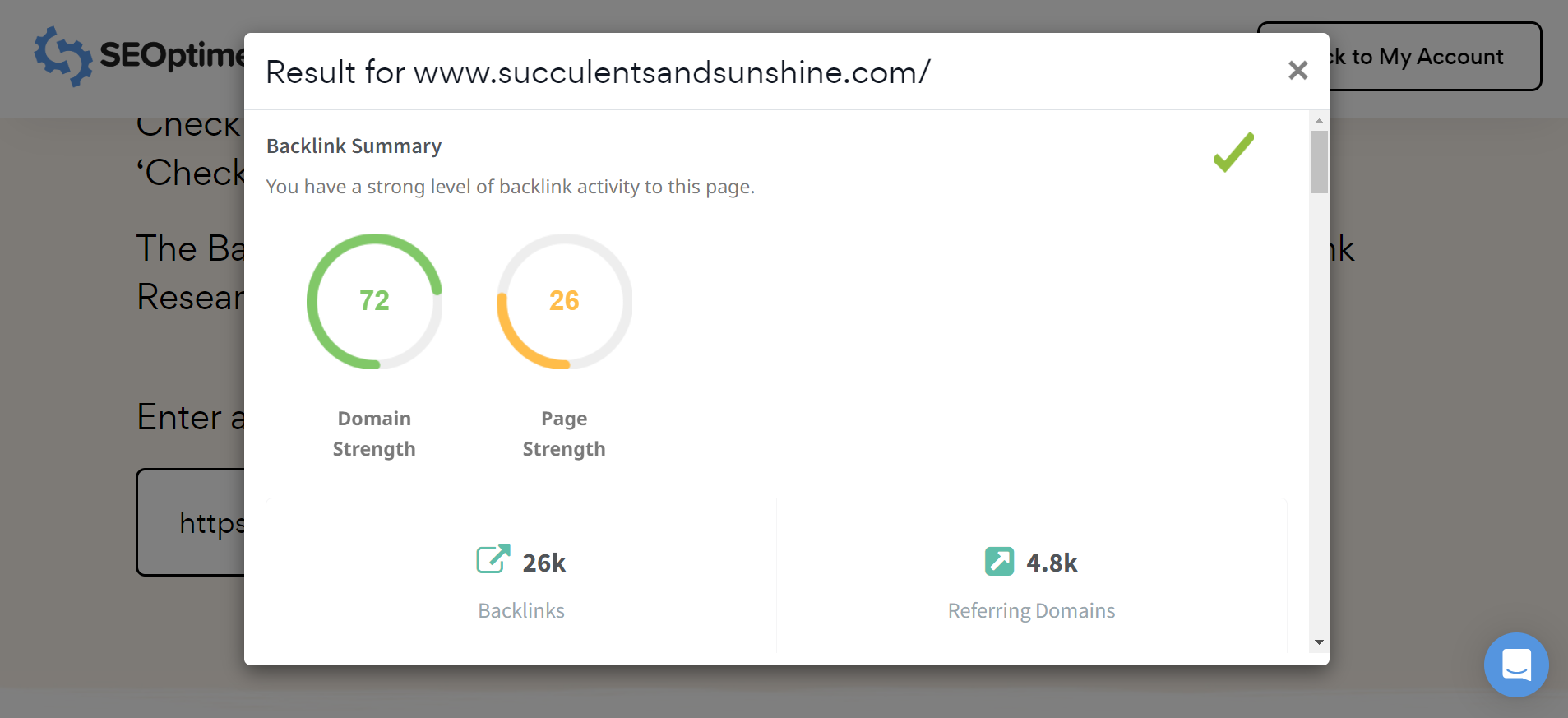
We’ll show you your website’s Domain Strength, Page Strength, total backlinks, and other valuable backlink metrics.
You’ll also see a breakdown of your most valuable backlinks, Top Pages by Backlinks, and Top Anchors by Backlinks.
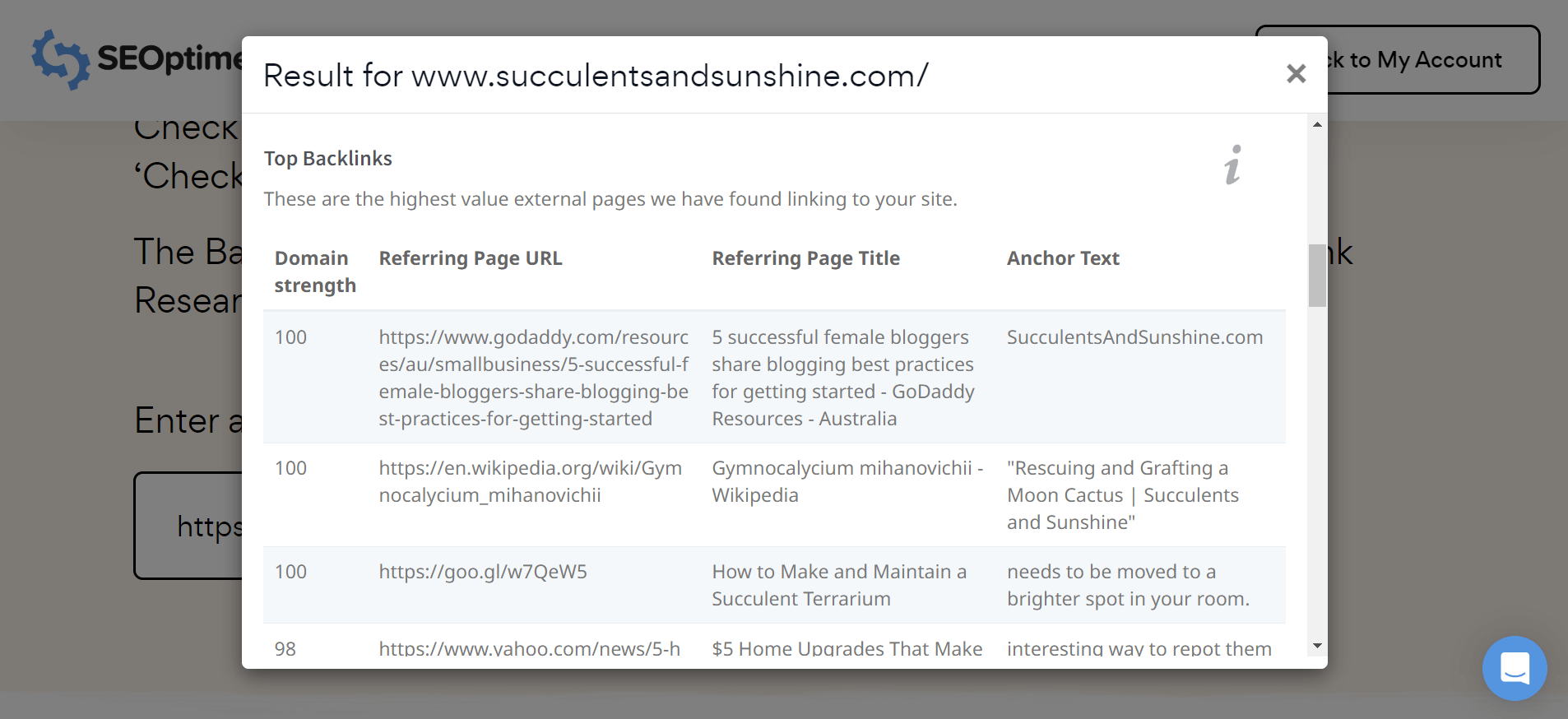
2. Websites with Multiple Links to Your Domain
Sites that already contain several links pointing to your domain may not provide additional value.
Excessive links from the same source can appear manipulative and may be flagged by search engines.
3. Link Farms
It's best to avoid sites that exist solely to sell or exchange links. These "link farms" often have a large number of outbound links with little to no valuable content.
Search engines penalize link farms, and associations with such sites can diminish your site's credibility.
Any links that are intended to manipulate rankings in Google Search results may be considered link spam. - Google Webmaster Guidelines
4. Private Blog Networks (PBNs)

Be cautious of PBNs, which are networks of blogs created to build backlinks and manipulate search engine rankings.
Links from PBNs are considered unnatural by search engines and can result in severe penalties, including drops in rankings or complete deindexing.
Conclusion
By using the right tools and strategies, you can uncover valuable unlinked mentions and transform them into powerful backlinks. Remember to be selective about which mentions to pursue and focus on building high-quality relationships.










